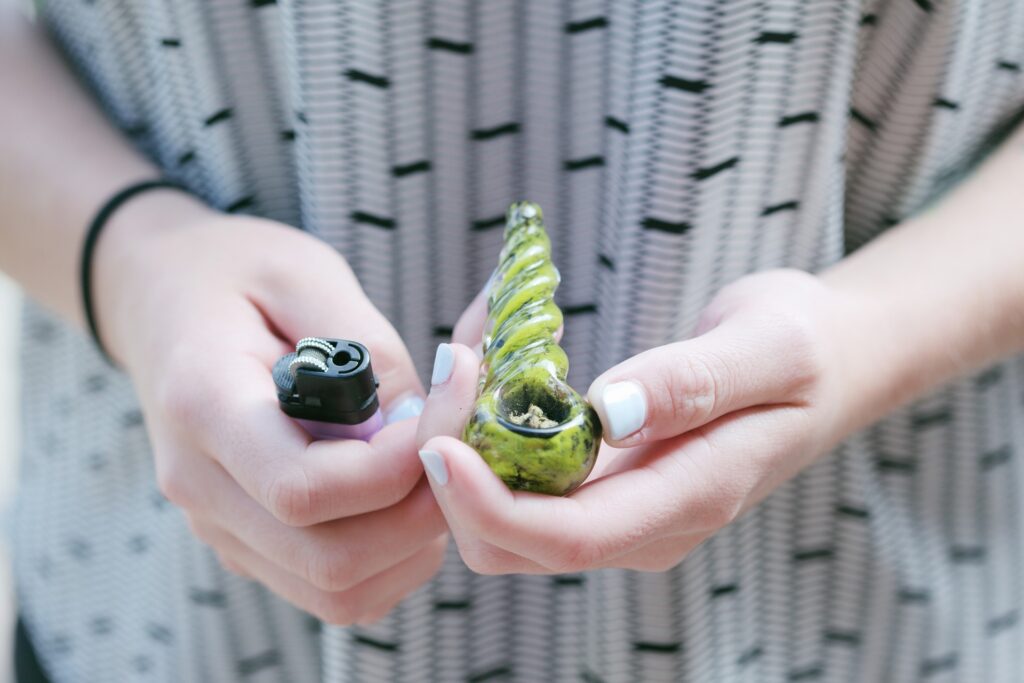As of January 2020, 11 states and the District of Columbia allowed adult use of cannabis and 10 states allowed commercial sales. The majority of these states set sales limits based on the product’s weight, despite significant variation in the amount of tetrahydrocannabinol (THC) in these products.
New research led by USC health economist Rosalie Liccardo Pacula finds there is considerable variation across states in the total grams of THC allowed to be purchased in a single transaction, but all states allow the equivalent of more than 500 10-milligram doses of THC to be purchased in a single transaction – enough for a typical daily user to be supplied for a month or more. The study was published earlier this month in the American Journal of Preventive Medicine.
“Sales limits are usually put in place to encourage moderation and to prevent diversion from the legal to the illegal market,” said Pacula, Elizabeth Garret Chair in Health Policy, Economics & Law at the USC Schaeffer Center and Professor of Health Policy and Management at the USC Price School of Public Policy. “The limits applied by U.S. states today will not accomplish either of these objectives.”
Grams of Cannabis versus Grams of THC
In the absence of federal regulations, each state that legalizes cannabis must develop its own regulatory system for sales and consumption. Pacula and her colleagues at Boston University and RAND, with funding from the National Institutes of Alcohol Abuse and Alcoholism, are examining differences in state regulatory environments, including limits on sales.
They find that states that allow legal retail sale of recreational cannabis established sales limits, typically based on the weight of each of the cannabis product sold. For example, limits on the sale of flower and/or bud are set at 1 ounce for all but two states – Maine and Michigan – who set their limit at 2.5 ounces. Concentrates similarly have weight-based limits imposed, ranging from a low of 3.5 grams (in Nevada) to a high of 15 grams (in Michigan). On face value, these seem like small deviations from relatively innocuous amounts of each product.
The problem, say the researchers, is that the weight of a product tells you nothing about the amount of THC, the main psychoactive ingredient in cannabis used to measure potency. The amount of THC in each class of products can vary by a lot. Flowers and bud material can vary from 8%-34% THC while concentrates can vary from 40%-97% THC, based on real products sold on the market in Washington State.
Therefore, the total grams of THC purchased in a single transaction can vary significantly even when the same quantities of cannabis are being purchased.
“A person purchasing the maximum amount of flower and concentrate in, say, Nevada could walk away having purchased 3.67 grams of THC if they stuck to the lowest potency products, or 13.03 grams of THC if they purchased the highest potency products,” says Timothy Naimi, lead scientist on the grant. “It would be far more transparent if all sales limits were based on the amount of THC, rather than the weight of the product.” Naimi, who is now with the University of Victoria, Canada, conducted this research when he was a physician and faculty member at Boston Medical Center and Boston University School of Public Health.
The researchers find if all products sold had minimum product potencies, the grams of THC sold in a transaction can range from 2.3 grams in Massachusetts to 10.5 grams in Michigan. At maximum product potencies, grams of THC per transaction range from 5.6 in Alaska to 33.6 in Michigan.
This Variation Translates into High Doses
Unlike alcohol or tobacco, there is no set dose (or serving) for cannabis, but the industry and scientists are converging on standardized doses of about 5 to 10 milligrams of THC.
Assuming a 10-milligram dose, all states allowed for single purchases exceeding 500 THC-standardized doses assuming average potency of the product. Six states allowed single purchases exceeding 1,000 doses and one state allowed more than 2,000 doses to be sold in a single transaction.
Given that the typical daily user consumes approximately 320 milligrams of THC in a day, these quantity limits suggest that they can purchase enough cannabis in a single transaction to last two weeks in any state. They can easily purchase even more than a two-week supply if they only purchased high-potency products.
Regulation Should Emphasize Limits on the Quantity of THC
As an increasing number of states consider legalizing cannabis, these findings show why caps on total transaction amounts and dosing measurements are important, say the researchers. If regulators intend to encourage moderate consumption of THC, then limits should be based on the quantity of THC. Otherwise, individuals interested in purchasing large amount of THC can simply purchase products with increased potency.
“Current limit and regulations do little to encourage consumers to think about quantities of the psychoactive ingredient being consumed,” says Pacula. “Furthermore, given that no U.S. state places restrictions on the number of purchases that a person can make in a day or across stores, these limits are grossly inadequate if they are meant to discourage diversion from the legal market.”
This study was authored by Rosalie Liccardo Pacula PhD, Jason G. Blanchette JD, MPH, Marlene C. Lira MPH, Rosanna Smart PhD, Timothy S. Naimi MD, MPH. Funding for this study was provided by award R01AA026268 from the National Institute on Alcohol Abuse and Alcoholism (NIAAA).
